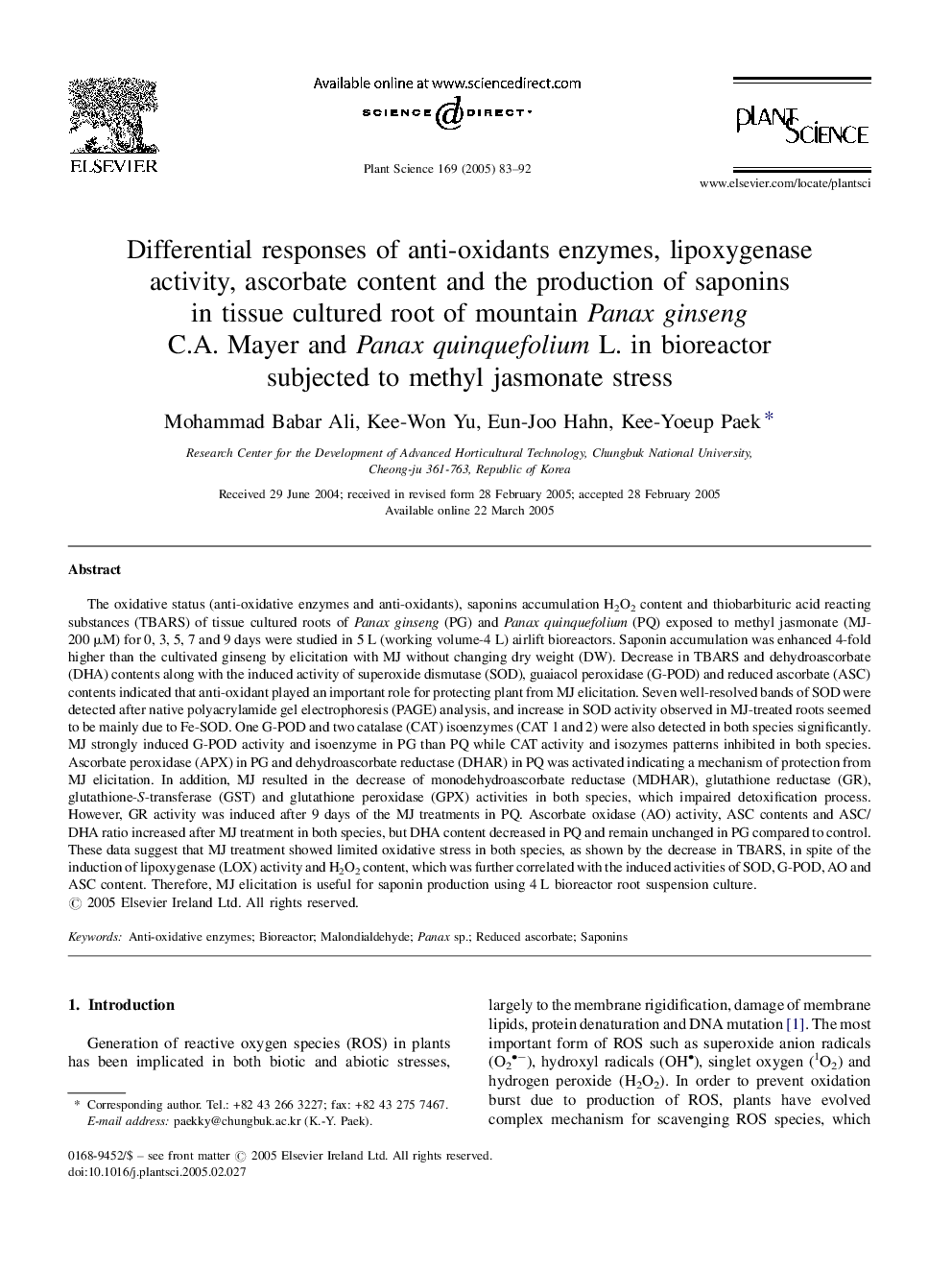| Article ID | Journal | Published Year | Pages | File Type |
|---|---|---|---|---|
| 10841972 | Plant Science | 2005 | 10 Pages |
Abstract
The oxidative status (anti-oxidative enzymes and anti-oxidants), saponins accumulation H2O2 content and thiobarbituric acid reacting substances (TBARS) of tissue cultured roots of Panax ginseng (PG) and Panax quinquefolium (PQ) exposed to methyl jasmonate (MJ-200 μM) for 0, 3, 5, 7 and 9 days were studied in 5 L (working volume-4 L) airlift bioreactors. Saponin accumulation was enhanced 4-fold higher than the cultivated ginseng by elicitation with MJ without changing dry weight (DW). Decrease in TBARS and dehydroascorbate (DHA) contents along with the induced activity of superoxide dismutase (SOD), guaiacol peroxidase (G-POD) and reduced ascorbate (ASC) contents indicated that anti-oxidant played an important role for protecting plant from MJ elicitation. Seven well-resolved bands of SOD were detected after native polyacrylamide gel electrophoresis (PAGE) analysis, and increase in SOD activity observed in MJ-treated roots seemed to be mainly due to Fe-SOD. One G-POD and two catalase (CAT) isoenzymes (CAT 1 and 2) were also detected in both species significantly. MJ strongly induced G-POD activity and isoenzyme in PG than PQ while CAT activity and isozymes patterns inhibited in both species. Ascorbate peroxidase (APX) in PG and dehydroascorbate reductase (DHAR) in PQ was activated indicating a mechanism of protection from MJ elicitation. In addition, MJ resulted in the decrease of monodehydroascorbate reductase (MDHAR), glutathione reductase (GR), glutathione-S-transferase (GST) and glutathione peroxidase (GPX) activities in both species, which impaired detoxification process. However, GR activity was induced after 9 days of the MJ treatments in PQ. Ascorbate oxidase (AO) activity, ASC contents and ASC/DHA ratio increased after MJ treatment in both species, but DHA content decreased in PQ and remain unchanged in PG compared to control. These data suggest that MJ treatment showed limited oxidative stress in both species, as shown by the decrease in TBARS, in spite of the induction of lipoxygenase (LOX) activity and H2O2 content, which was further correlated with the induced activities of SOD, G-POD, AO and ASC content. Therefore, MJ elicitation is useful for saponin production using 4 L bioreactor root suspension culture.
Related Topics
Life Sciences
Agricultural and Biological Sciences
Plant Science
Authors
Mohammad Babar Ali, Kee-Won Yu, Eun-Joo Hahn, Kee-Yoeup Paek,
